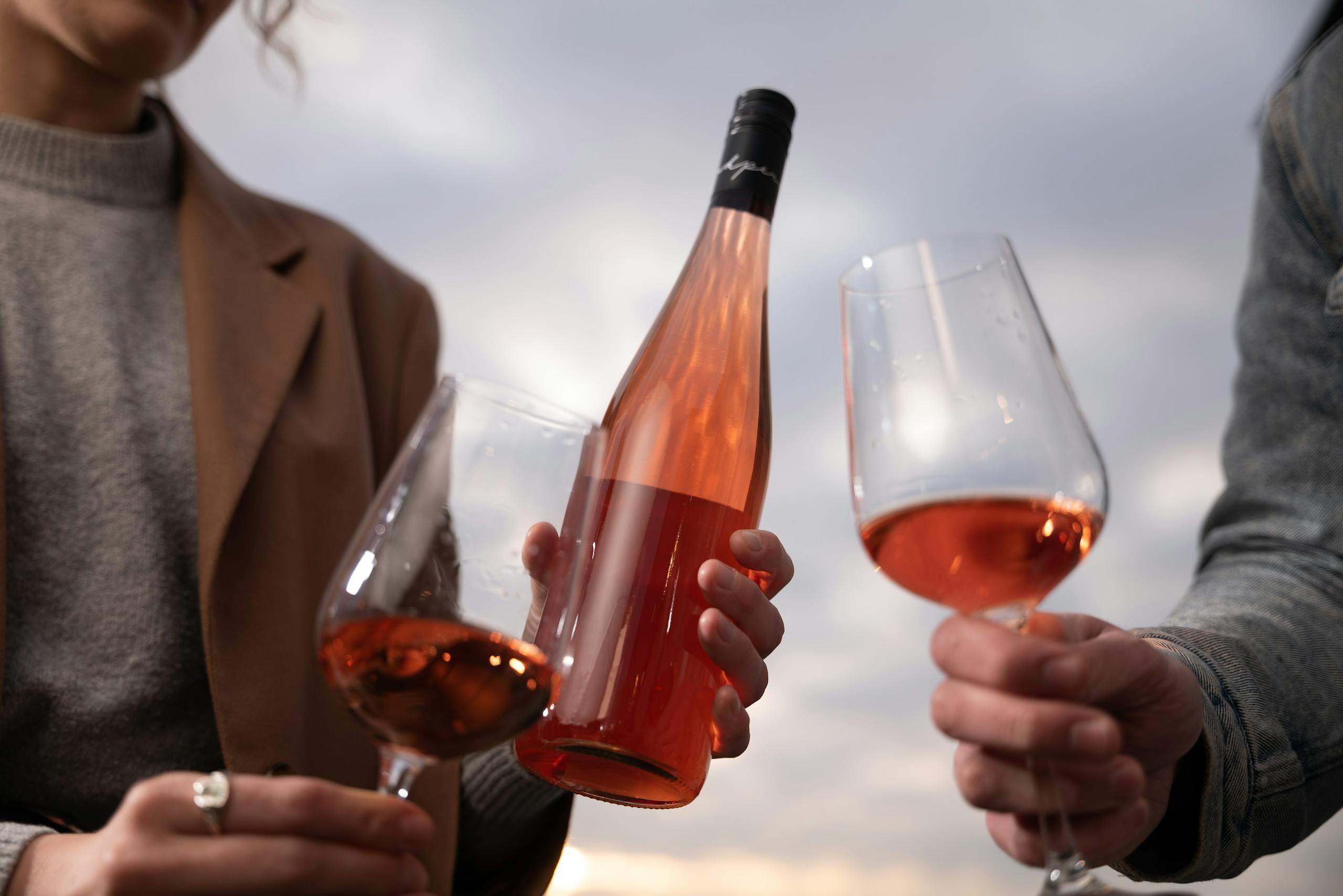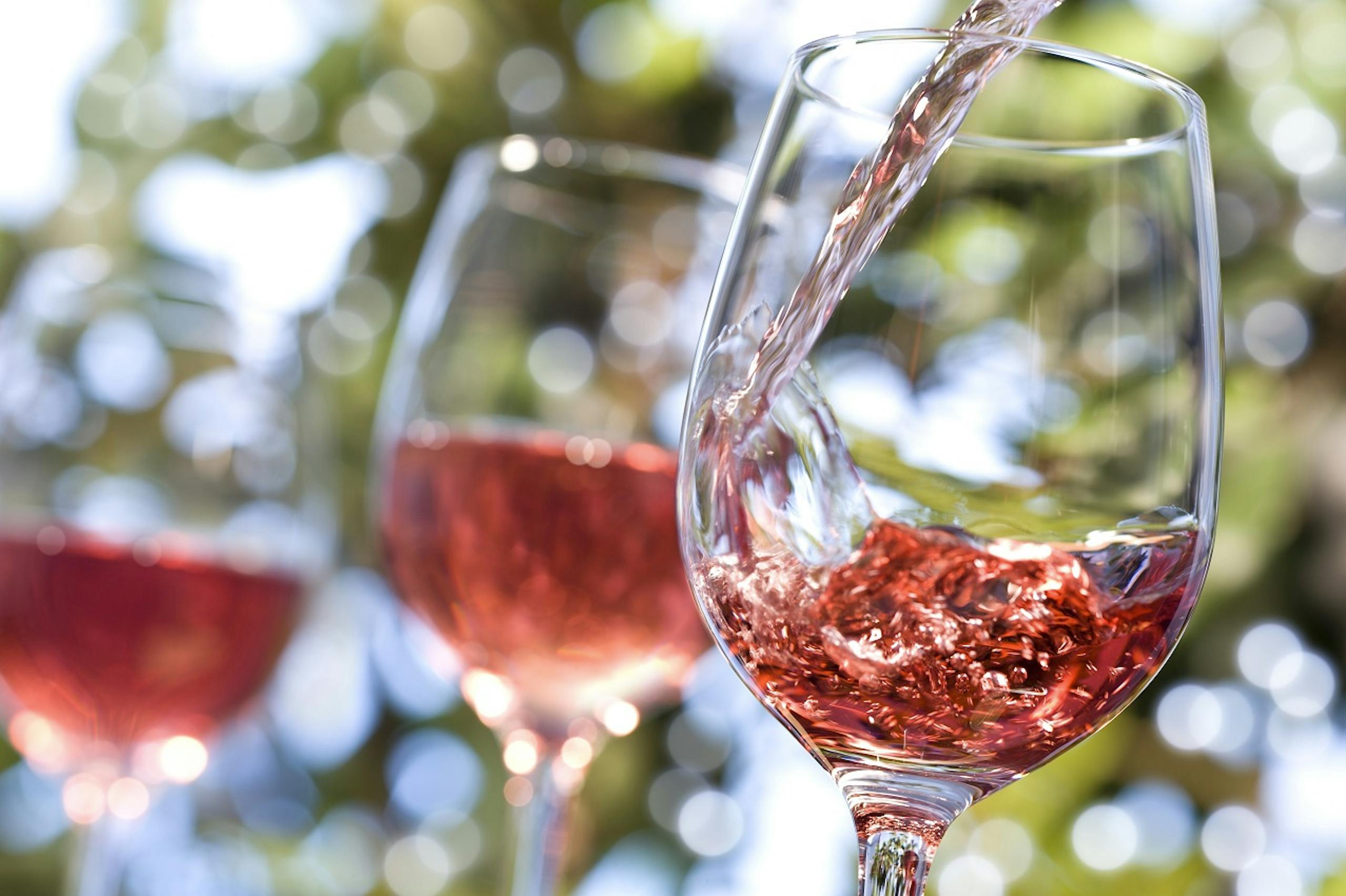The most common myths about rosé, or are rosé wines really a mixture of red and white?
It is no longer the case that we have a choice of red or white in our businesses. In addition to the fact that cafés, bistros and restaurants offer several varieties from Moravian and Czech winemakers, rosé, a rosé wine, is often among them. Is this a recent innovation? Does its colour shade reveal its quality? Let's clarify the most common discrepancies with national sommelier Klára Kollárová.

Myth No. 1: Rosé wine is the "invention" of the last decades
No, rosé wine has a long history, although it is true that it has only recently acquired this designation. In Moravia, they used to be called, for example, "pink wine". "In the Czech Republic, it was called 'rosé' or 'Labín', a term still used for Pinot Noir rosé. However, the first references date back to around the 4th century BC, when the famous Hippocrates encouraged his patients to drink the light red delicious drink. However, rosé wines enjoyed a major boom in the Middle Ages, especially in France, where Pinot Noir and Pinot Gris were planted together and their joint processing produced wines of a lighter shade.
Myth 2: There is no long tradition of rosé wine production in the Czech Republic
On the contrary, rose-tinged wines have been produced in the Czech Republic since the 16th century. Small winegrowers with mixed plantings had to press their crushed grapes on municipal presses or with 'large-scale winemakers'. This prolonged the winemaking process, and waiting for a free press meant that the resulting must was pinkish in colour.
Today, Moravian rosé in particular is among the world's top wines, as evidenced by its many successes at internationalinternational wine competitions, where they regularly win medals and even the highest awards. Last year, for example. The wine πnot noir 3.14 Pinot Noir Blue Rosé, late harvest 2017 from the winery Znovín Znojmo, became theChampion of the semi-dry rosé wine category at one of the most prestigious wine competitions, the Concours Mondial de Bruxelles.
Myth No. 3: Rosé is a blend of red and white wine
This myth sounds logical but is far from reality. It is definitely not a mix of red and white. The practice is even forbidden by law. Although rosé wine can also be made by using white and blue grapes together before fermentation, the most commonThe most common practice is the very short time (3-24 hours) that the crushed blue grapes are in contact with the skins before pressing. It is the grapes that contain the red dye that gives the wine its colour. The longer the grapes are skins together, the darker the wine and the richer the colour. On the other hand, immediately pressed blue grapes give a virtually clear must and such wine is then called claret.
Myth 4: Neither the cat nor the dog - rosé wines are not as good as white or red wines
Rosés can be of superior quality and complexity just like white and red wines. The key to quality is the variety, the quality of the grapes, the production process and the skill of the winemaker. It is also not uncommon for some rosés to have archival potential and improve with age.
Myth 5: Rosé wines are weaker and have less alcohol than both red and white wines
How did you come up with this? Perhaps the colour pink evokes lightness and freshness, hence the lower alcohol percentage. Anyway, don't rely on this and study the label when choosing, as you may also come across wines that have up to 14% alcohol.
Myth 6: Pink wines are such sweet "pussies"
There's also a wide range of rosé wines to choose from, both drier ones with predominant acidity and sweet ones. It depends on the intention of the winemaker. Try a few good dry rosé wines and you will probably change your mind.
Myth No. 7: You can't really pair rosé wine with food
Try a rosé wine with grilled fish, Asian-style meats, sausage, dessert... Not bad, right? Because rosé wines are great to pair and have versatile uses. Dry rosés can handle vegetable salads, for example. With goat's cheese and cranberries, grilled sausages and cold quality cured meats, fatty salmon in many ways or pork tenderloin, and even light adaptations of lamb. They are also excellent with prawns or with various curries. Semi-dry and sweeter rosé wines can then be paired with fruit salads or refreshing sorbets.
Myth 8: The quality of rosé is also indicated by its shade
Definitely not. The strength of the colour is definitely not an indicator of the quality of the wine. The intensity of the rosé depends on the variety, and especially the length of maceration (technological process). Today, modern rosés are of very low colour intensity, but you can also find wines of light red colour on the market.
Myth No 9: Rosé is not very popular and its consumption is low
The opposite is true. Pink wine is increasingly popular with consumers. Around 20 million hectolitres are produced worldwide each year, and an average of over 600 000 hectolitres is produced here, i.e. around 10% of total production. France is the world's largest producer, accounting for up to 30% of production. France is not far behind other wine-growing regions - Spain and Italy - where rosé sparkling wines are very popular. But what can we say, Moravia is Moravia.




